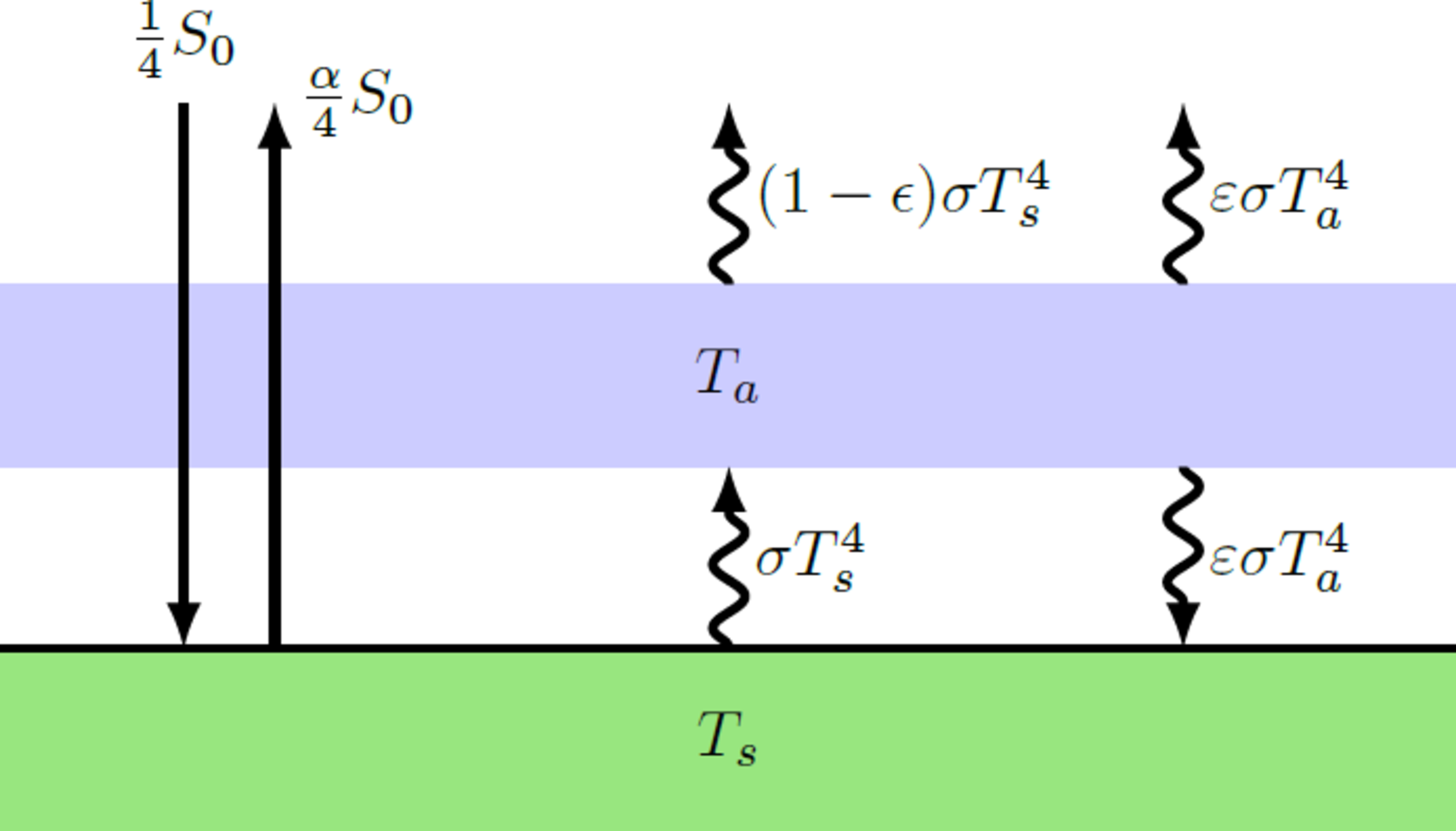Atmospheric physics 15: Emissivity of the atmosphere

The assumption, that the atmosphere completely absorbs the heat radiation of the earth, leads to a much stronger greenhouse effect, than we observe in reality. In fact, there are several windows in the absorption spectrum of the atmosphere, so that only a part of the thermal radiation is absorbed. For a more realistic model of the greenhouse effect, it is therefore assumed, that there is a gray atmosphere, that has an emissivity .
What is the value of the emissivity of earth's atmosphere, so that the surface temperature is equal to the actual mean temperature ?
Details and Assumptions:
- The emissivity indicates the proportion of the incident radiation, that is absorbed by the atmosphere. Thus, the earth's surface emits the intensity directly into space, while the part is absorped.
- The emissivity also describes the thermal radiation efficiency of the atmosphere. Thus, the atmosphere radiates the intensity as heat radiation into space and onto earth's surface.
- For the sunlight, the atmosphere is still transparent, while the earth's surface has an albedo for visible light.
This section requires Javascript.
You are seeing this because something didn't load right. We suggest you, (a) try
refreshing the page, (b) enabling javascript if it is disabled on your browser and,
finally, (c)
loading the
non-javascript version of this page
. We're sorry about the hassle.
In contrast to the last problem, the radiation of the atmosphere must be modified to I a = ε σ T a 4 . In addition, we get the transmission I t,s = ( 1 − ε ) σ T s 4 through the atmosphere as another term. The energy balance is therefore I in I in + I a = I r + I t,s + I a = I r + I s This equations can be rewritten to 4 1 − α S 0 4 1 − α S 0 = ( 1 − ε ) σ T s 4 + ε σ T a 4 = σ T s 4 − ε σ T a 4 Thus we obtain a linear system of equations for the two unknowns T s 4 and T a 4 , that can be solved by matrix inversion: [ 1 − ε 1 ε − ε ] [ T s 4 T a 4 ] ⇒ [ T s 4 T a 4 ] = 4 σ ( 1 − α ) S 0 [ 1 1 ] = 4 σ ( 1 − α ) S 0 ε ( 2 − ε ) 1 [ ε 1 ε − ( 1 − ε ) ] [ 1 1 ] = 4 ( 2 − ε ) σ ( 1 − α ) S 0 [ 2 1 ] For the surface temperature therefore applies T s = [ 2 − ε 1 2 σ ( 1 − α ) S 0 ] 1 / 4 = ⎩ ⎪ ⎨ ⎪ ⎧ [ 4 σ ( 1 − α ) S 0 ] 1 / 4 ≈ 2 5 5 K [ 2 σ ( 1 − α ) S 0 ] 1 / 4 ≈ 3 0 3 K ε = 0 ε = 1 The solution contains the two preceding solutions as special cases for ε = 0 and ε = 1 . If the general equation is solved for the emissivity, the result is ε = 2 − 2 σ T s 4 ( 1 − α ) S 0 = 2 − 2 ⋅ 5 . 6 7 ⋅ 1 0 − 8 ⋅ 2 8 8 4 ( 1 − 0 . 3 ) ⋅ 1 3 7 0 ≈ 0 . 7 7